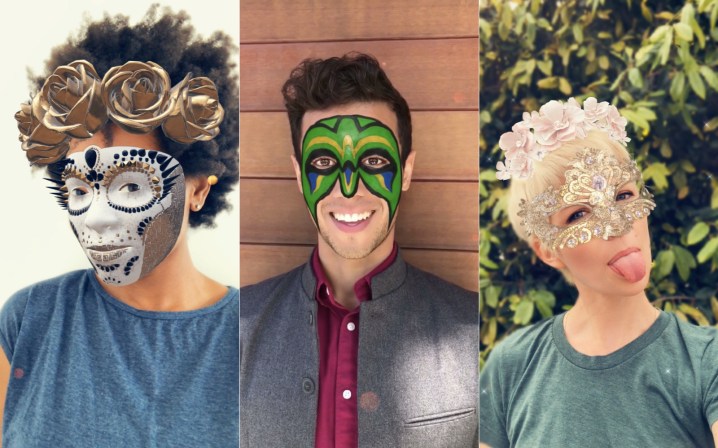
Snapchat has updated its app to take advantage of the advanced facial recognition TrueDepth sensors on the iPhone X, delivering users even more spectacular Lenses.
If you’re a Snapchat user, or if you frequent social media, you’re likely aware of Snapchat’s Lenses. A long-running feature of the app, these AR filters allow users to morph their faces, overlay various masks, or apply an animal mask that tracks your facial movements. However, they’re not without some clunkiness for the majority of users, and most will find the overlays breaking if they move out of frame, or move too quickly. iPhone X owners, however, will find that their lenses function much better, thanks to Snapchat’s new integration with the iPhone X’s astounding facial tech.
Apple’s TrueDepth tech uses a series of sensors mounted into the front notch to paint 30,000 infrared dots onto your face, mapping your face’s structure in 3D. It’s the tech that powers the iPhone X’s Face ID, and it’s now being leveraged by Snapchat to make filters that are far more realistic. Thanks to the additional data allowed by TrueDepth, Snapchat’s filters can apparently compensate for ambient light, creating shadows and highlights where needed to follow the contours of your face and adapt to your surroundings.

You might be worried about companies exploiting this data for use in their own marketing schemes, or using the data from your Lenses to bypass your Face ID security settings, but there’s no need to worry. While Apple allows developers access to certain parts of the TrueDepth sensors, the developer agreement means that developers only have access to the visually mapped facial data, and not the mathematical algorithm used in Face ID. Apple also specifically bans developers from using this data for marketing purposes, selling it to other companies, or using the data to create a marketing profile of specific users.
Augmented reality, or AR, is getting bigger and bigger in mobile tech. We’ve seen a recent surge in AR apps thanks to the release of Google’s ARCore framework (here are our favorite AR apps), and we’re even seeing fun AR functionality built into new phones with functions like Apple’s Animoji, or Samsung’s AR Emoji.


